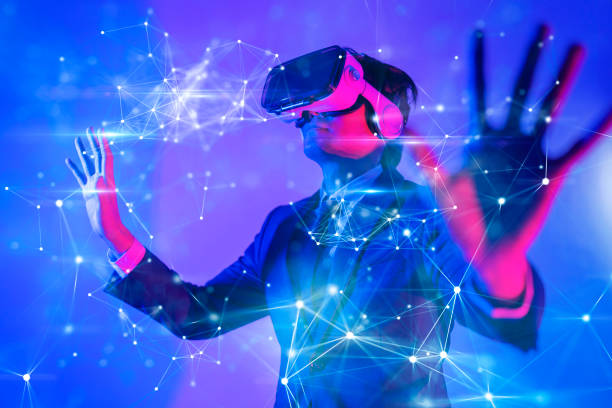Making dreams to experience a virtual space with countless possibilities, as we have continued to witness in science fiction movies, TV shows, and gaming platforms where people control their surroundings, interact, engage, and augment them. Taking into consideration the number of changes, turmoil, and growth the world has experienced in the last couple of years, technology simply doesn’t fail to surprise people with something new, bold, and innovative every single day. A very similar concept is taking over the technological advancements of tools used for entertainment & escapism, slowly but steadily known as the “Metaverse.” The article looks into what a Metaverse is, how it operates, and everything you need to know before making your way through the much-in-demand augmented reality space. Let us look through how the metaverse tech or concept can be utilized, how the tools are made available for experiencing the metaverse, and a variety of ways we could enjoy using it.
What Is The Metaverse?
The term “Metaverse” arises from the French word for “over-world,” an over-reach for an imaginary world that people with telepathic & mentally controllable abilities – powers can explore without physically being present in the same space, almost like the aura of a person traveling and visiting places that the humans cannot visit. Metaverse is the all-entailing space that is made up and presented in a way to envelop the user into the intended storyline or anything similar. It maintains a functioning that can be tied to a few or more virtual reality worlds intertwined on the internet. These spaces can also be referred to as the technologies and protocols used to access these spaces.
The Inception Of The Metaverse
The term “metaverse” was first coined in the early 90s by a science fiction writer “Neal Stephenson” in one of his novels titled “Snow Crash.” But the metaverse is located in a virtually augmented digital realm where anyone who participates is free to move, function, and operate independently and do the things they could not do in the tangible reality. When taking into consideration the metaverse does not exist physically in the seemingly normal world we are all exposed to – we cannot touch or feel the same in the metaverse realm. It is more mental stimulation than anything else. Although, it lets the participants enjoy a variety of different spaces (augmented reality spaces) without really making an effort to experience the location that they are in physically. The metaverse platform provides users with a “no-strings-attached” aspect of immersive and interactive escapism.
Metaverse Functionings
NFT platform is a decentralized state of affairs. As the interfaces are built to cater to the decentralized platforms that occur in these virtual spaces, it is more understandable that the technology is as transparent as a straightforward monetizable and utility-filled ecosystem. Metaverse enthusiasts can create a customized virtual avatar, upgrade their skins, buy and trade in-game commodities or even entire ecosystems, and create their own virtual reality games within their minted portion of virtual land to represent themselves or rent it out to fellow players who want to access their spaces in this mundane made-up world.
A metaverse is a network of virtual worlds – either in a gaming interface or a community space that doubles as a metaverse space within itself – it is the concept that helps empower users and enhances the experience of interaction with the participants involved. The participants can also take inspiration from a variety of input devices to navigate this world, such as keyboards, joysticks, virtual reality headsets, dedicated sensor tracking bodysuits, and much more.
Wrapping Up The Wondrous Faux World Called The Metaverse
The metaverse can also be involved in its own function, as it can be represented through a 2D or 3D model over the online realm of systems interconnected to build and provide a multiplayer gaming interface. This begs the question to answer upon a huge distinction from the decentralized way of experiencing metaverse platforms in the market as they are open-source 3D platforms with a decentralized, i.e., undefined central ownership of control over the functionings in the metaverse and all the assets being used in it as a result. This gave the freedom for developers and artists to cater to developing and deploying metaverse games and such. Circling back to the metaverse elements – a metaverse interface could potentially contain everything from binary, i.e., digitally present information about a specific address to object-based platforms to peer-to-peer communications and team building.





